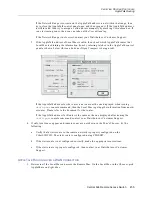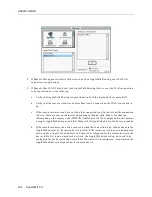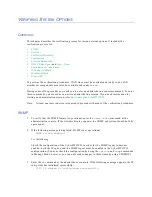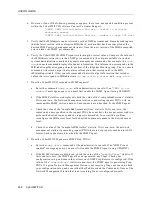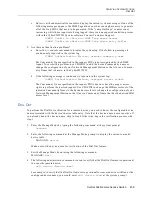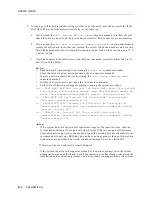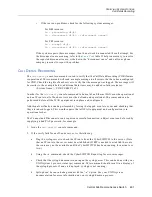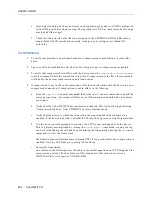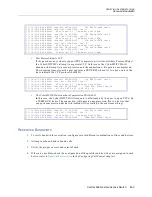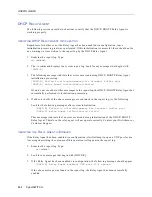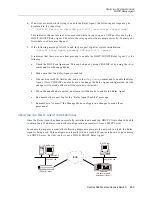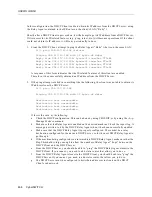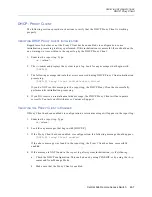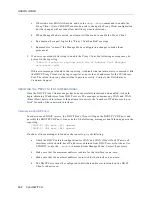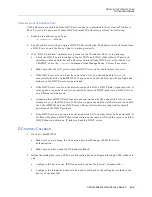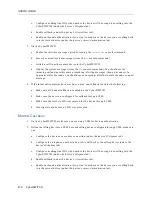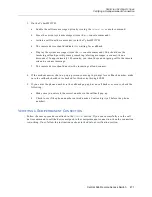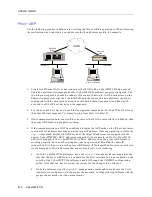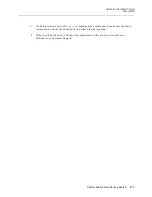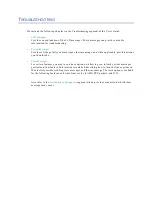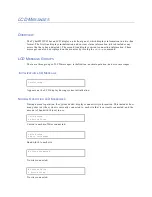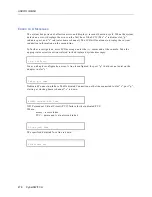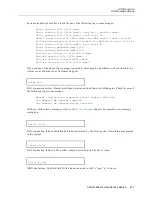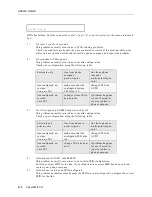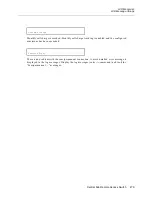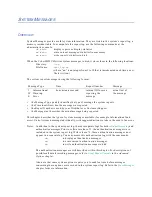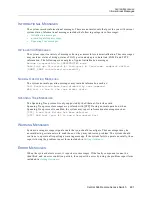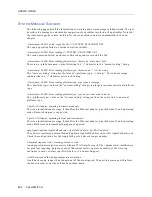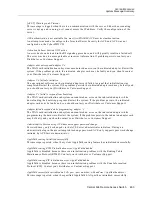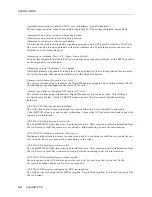
Central Site Remote Access Switch 469
V
ERIFYING
S
YSTEM
O
PTIONS
D Channel Callback
V
ERIFICATION
OF
IP A
DDRESS
P
OOL
As IP addresses are obtained from DHCP servers, they are placed into the system’s IP Address
Pool. To verify the presence of these DHCP-obtained IP addresses, perform the following:
1.
Examine the address pool. Type:
ip addrpool
<return>
2.
Look for addresses with an origin of DHCP. This verifies that IP addresses were obtained from
a DHCP server, and the Proxy Client is working correctly.
3.
If no “DHCP-obtained” addresses are present in the IP Address Pool, try the following:
a.
Check the DHCP-related configuration for WAN and WAN (Direct Host) IP network
interfaces which should have IP addresses obtained from DHCP servers for them. Use
CFGEDIT, or use the
ipnetif
command from Manage Mode. Correct if necessary.
b.
Make sure that the LAN port to reach the DHCP server on for the interface is correct.
c.
If the DHCP server is on a directly-connected LAN, you should be able to
ping
it
successfully from the CyberSWITCH. If you cannot, check the LAN port IP configuration;
make sure the DHCP server is operational.
d. If the DHCP server is not on the directly-connected LAN, a DHCP Relay Agent must be. A
relay agent is required in order to successfully forward DHCP packets to a DHCP server
on a different sub-network.
e.
Assuming that a DHCP Relay Agent is present on the directly-connected LAN, you can
attempt to
ping
the DHCP server. This may require the addition of IP static routes on both
the CyberSWITCH and the DHCP server. These static routes are required for smooth
operation of the DHCP protocol.
f.
If the DHCP server is not on a directly-connected LAN, another test may be performed. If
at all feasible, place a DHCP client workstation on the same LAN with the server. See if this
DHCP client can obtain an IP address from the DHCP server.
D C
HANNEL
C
ALLBACK
1.
On the CyberSWITCH:
a.
Make sure you are using the Connection Services Manager (CSM) for device
authentication.
b.
Make sure you have enabled D Channel callback.
2.
Define the calling devices on CSM. For each calling device configured through CSM, make sure
you:
a.
Configure the device as an ISDN connection (under the device’s Telephone tab).
b.
Configure the telephone number to be used to call back to the calling device (under the
device’s Telephone tab).

